The ES is a mid-size sedan with a Lexus face that is in the same price range as the top grade of the previous Crown, and has a similar size and style to the Crown.
In Japan, it is a 2.5-liter straight-four hybrid only, and the weight distribution of the horizontal FF is 1000 kg front and 700 kg rear. How does this affect athletic performance or not?
This time, I was able to rent a car for one night from Toyota Rent a Car, so I drove around Nagano Prefecture late at night on Chuo Expressway and Venus Line to check out the comfort and driving feel of this car at various speeds and driving conditions.
Summary at the beginning
A quick introduction to the advantages and disadvantages of this car
About driving feel
About the powertrain
From the moment you start driving, you can tell the difference from Toyota’s smooth movement.
The numerical output itself is not much different from Toyota’s Crown, but the way the torque is produced is clearly different.
It doesn’t have the comfort of pure gasoline or the sensuality of a straight-six engine, but it accelerates smoothly up to the high rpm range and picks up speed quickly.

If you continue to step on the accelerator gradually, combined with the inherent stability, you’ll pick up a lot of speed before you know it. If you don’t take precautions in that situation, your license will be suspended or your Orbis will be flashed.
There is a pseudo multi-stage mode that can be operated with paddle shifters, but I get the impression that the reduction ratios are always linked like rubber.
It’s nice to be able to skip a shift change and step on it without thinking about gear selection, but it’s not suitable for people who want to change gears with ease and comfort.
Since it was made with priority given to a relaxed and comfortable flow, we prioritized the ease of stepping on it without having to worry about the number of revolutions.
About handling
Driving that emphasizes calm rather than sportiness.
urban area
There are times when it feels a little big until you get used to it, but it’s basically easy to ride without any quirks.
The steering wheel is easy to operate, and it feels like a standard sedan.
As long as you drive carefully as usual, you can move around in an elegant interior space.
High speed range
It’s very stable on the highway, and it doesn’t wobble all the time, so you don’t feel unstable at all even when you increase speed.
Even when you step on the brakes, the movement stops without much nose dive.
The stability is particularly impressive when going over undulations and bumps on the Chuo Expressway, instantly canceling out small movements that could lead to fear or instability.
This achieves extremely high line tracing performance, and if you decide the cruising speed solely based on the remaining power of the chassis, you will either hit the limiter or hit the orbis.
When I drove on the Chuo Expressway, it was raining, and there were situations where rainwater collected in the ruts and caused hydroplaning, which caused one wheel to be carried away.
However, if you press the accelerator a little and operate the car calmly, there is nothing to worry about even if you are cruising at speeds that are too fast to write about here.
You can comfortably cruise uphill on Chuo Expressway at about twice the speed.
Not only can you drive on the highway at this speed without feeling desperate, but it’s also incredibly stable.
I felt that there was no other car that was more suitable for long-distance cruising on the expressway.
In order to ensure a high-quality ride in urban areas, it seems that the undercarriage is equipped with a mechanism that eliminates slight vibrations.
This also contributes to driving stability, giving me the ultimate sense of security when driving down the Chuo Expressway on a rainy day.
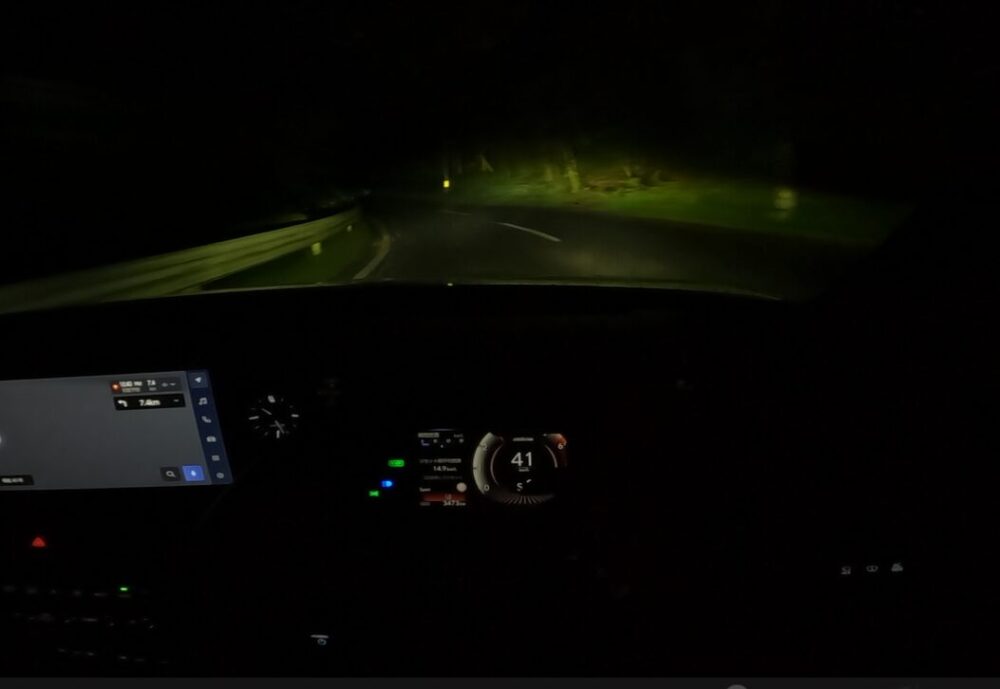
winding
Prioritizing stability too much at the expense of lightness.
From the moment of turn-in, the overall turning performance is modest, and if you turn the steering wheel rapidly, the front part will try to escape from the beginning of the turn.
By carefully arranging the rubber bushings, I feel that the alignment of the outside front tire has been intentionally moved in a direction that makes it difficult to turn.
Even when you turn the steering wheel, rather than turning the car with a jerk, it seems like it slows down by a tempo and slowly turns with weight.
The nose isn’t particularly light, so it’s a bit difficult to say that it’s enjoyable for winding.
Since it is a horizontally mounted inline-four with a vehicle weight of approximately 1.7 tons distributed between 1000 kg in the front and 700 kg in the rear, stability and composure are the top priorities when turning.
It was clearly not designed to attack mountain passes.
The motor assist accelerates comfortably from the exit, but I can’t help but notice the heavy turning feel.
On the highway, the stability was reliable, but on winding roads, the lack of nimble movement was a hindrance. It is best to let it flow slowly.
If you want to enjoy winding roads, choose another Lexus.
Weakness: Steering assist cannot be completely turned off
Even if I turn off all steering assist from the main unit settings in the meter, for some reason I can’t turn it off completely.
Even when I’m driving comfortably on the highway, even when I stop by the white line to adjust my position on a winding road, I can’t help but feel annoyed and stressed that my steering wheel is being slightly grabbed.
It’s a trade-off with safety, so it’s good for the ES, but I really want something to be done about the fact that even other Toyota models can’t completely cut off some things.
This is an element that further reduces the sportiness, and is one of the factors that makes it difficult to recommend the ES to those who like driving.
About ride comfort
A certain amount of impact is applied to the frame, but then the entire body floats gently like a raft and moves up and down to follow the motion.
I felt this was unusual among many cars that move their legs up and down a lot and crush the bump rubber to absorb the shaking.

The amount of stroke, or rather the amount of vibration absorbed by the damper, is not that great, and the ride feels like the body is gently rocking up and down from a relatively early stage.
Because of this, in situations where only one wheel falls into a pothole, the Dagon and frame are hit by a shock.
When I took the Chuo Expressway from the Nakatsugawa area to Nagoya, I encountered a difficult input process about once every 10km.
There is no vibration at low speeds, and you can enjoy a luxurious ride.
The weak point is when you fall down a step where only your shoulder rings have caved in.
I was going down the Chuo Expressway, and this stiffness appeared about once every 10km.
Interior and exterior introduction
I forgot to take pictures of the interior and exterior, so I’ll quote some from the official website.
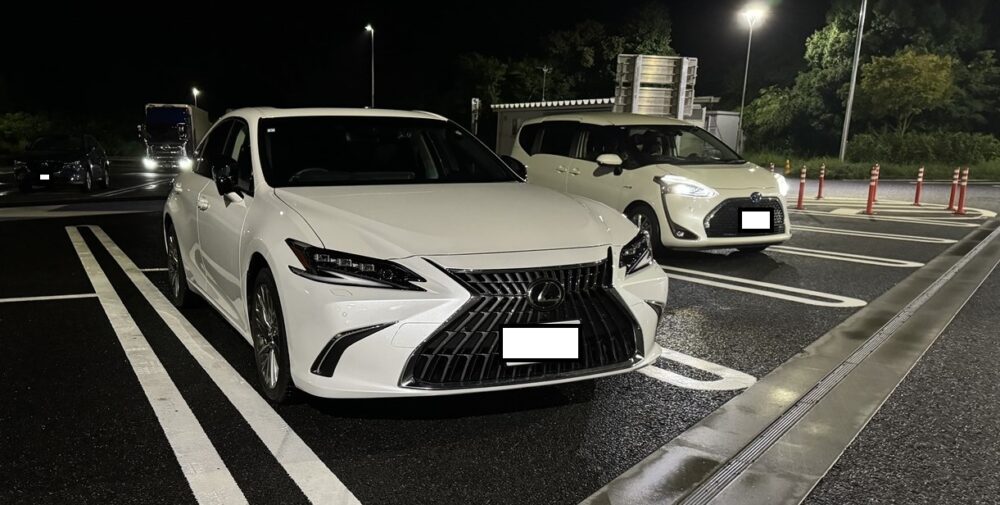
About the exterior
A design similar to the LS with an L-shaped spindle grille pushed out to the front.

The rear design has lines coming together from the top and bottom and converging in the center.

It’s a genuine Lexus sedan, but it doesn’t make any strong claims. It has such a mature appearance.
About the interior
From the driver’s seat, you can truly experience the feeling of riding in an elegant Lexus sedan.
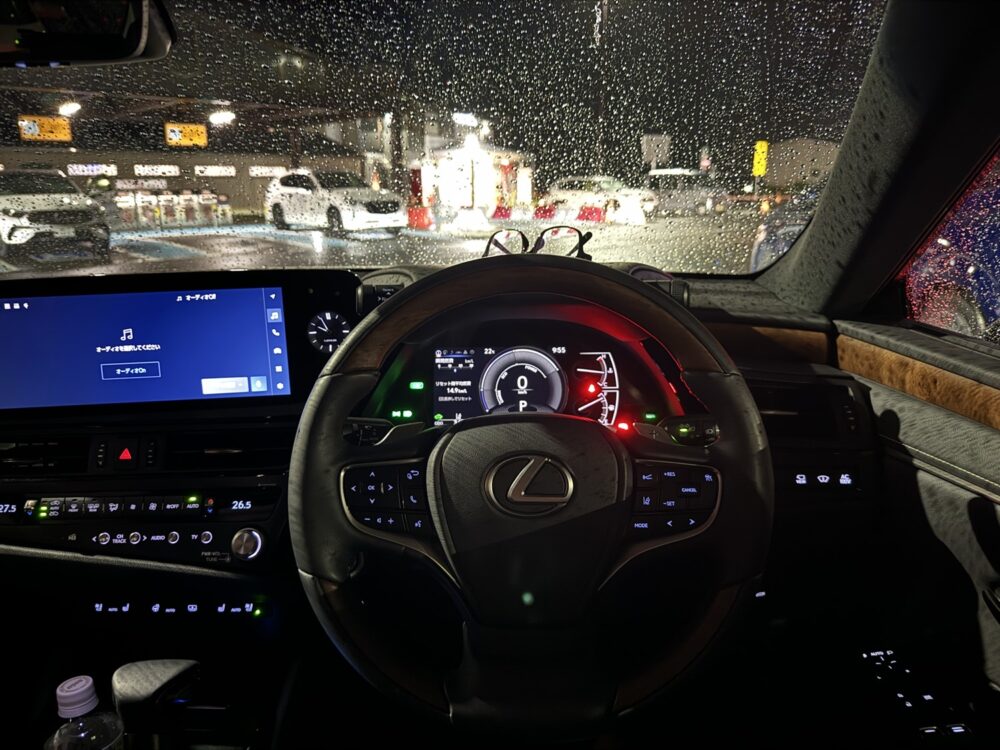
The steering wheel in particular is beautiful, and the contrast between the brown wood and the grayish color makes it seem like you’ll be able to stare at it forever.
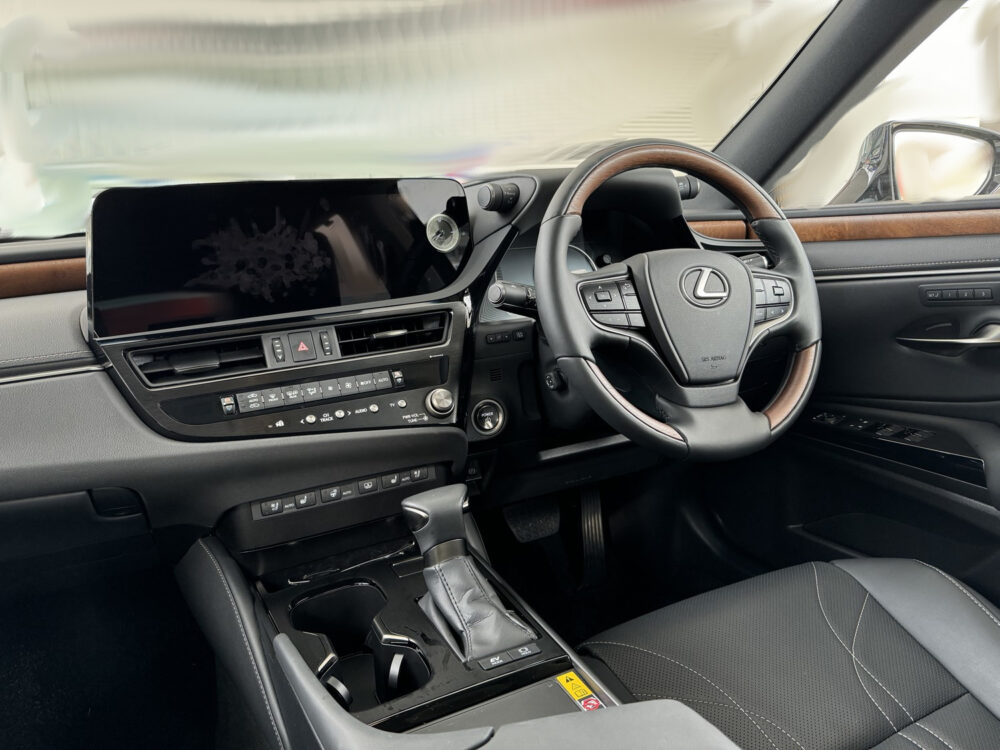
The buttons on the steering wheel are beautifully placed in terms of design, but because they are located in a recessed position, there were times when I felt slightly difficult to press them in the darkness of the night.
The combination of wood, metal, and leather materials is elegant, and the different materials wrap around the driver without conflict.
The air conditioning control system uses physical buttons for peace of mind and reliability.
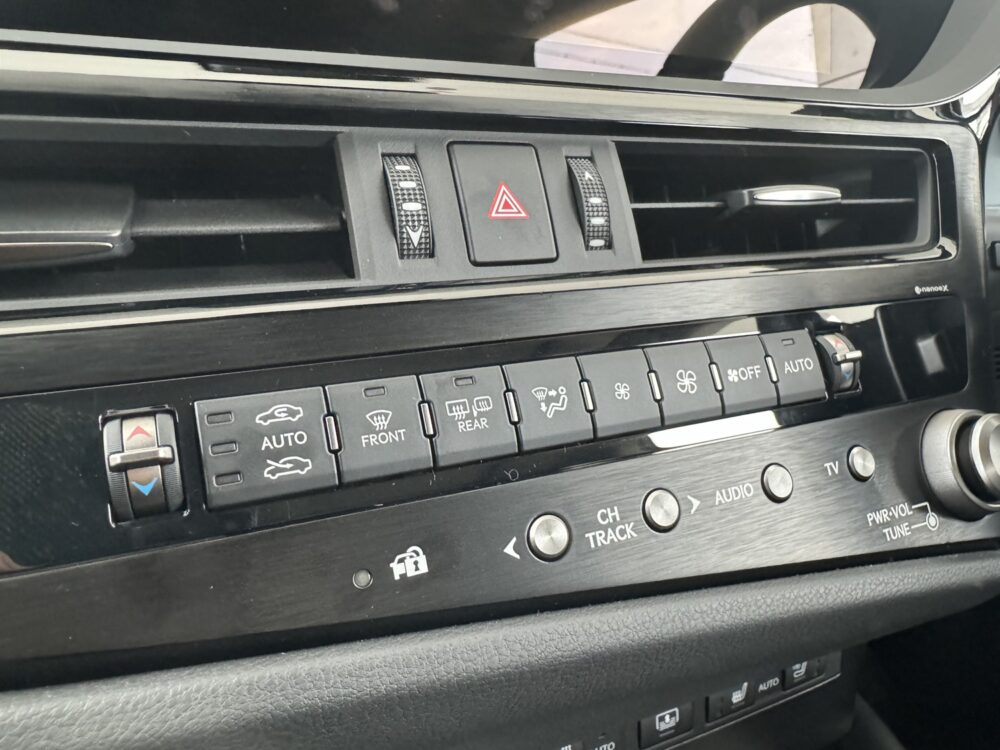
The metallic panels are cool.
Actually, this volume adjustment dial has two floors.
The back side and the front side have different functions. Pressing it seems to turn off the power.
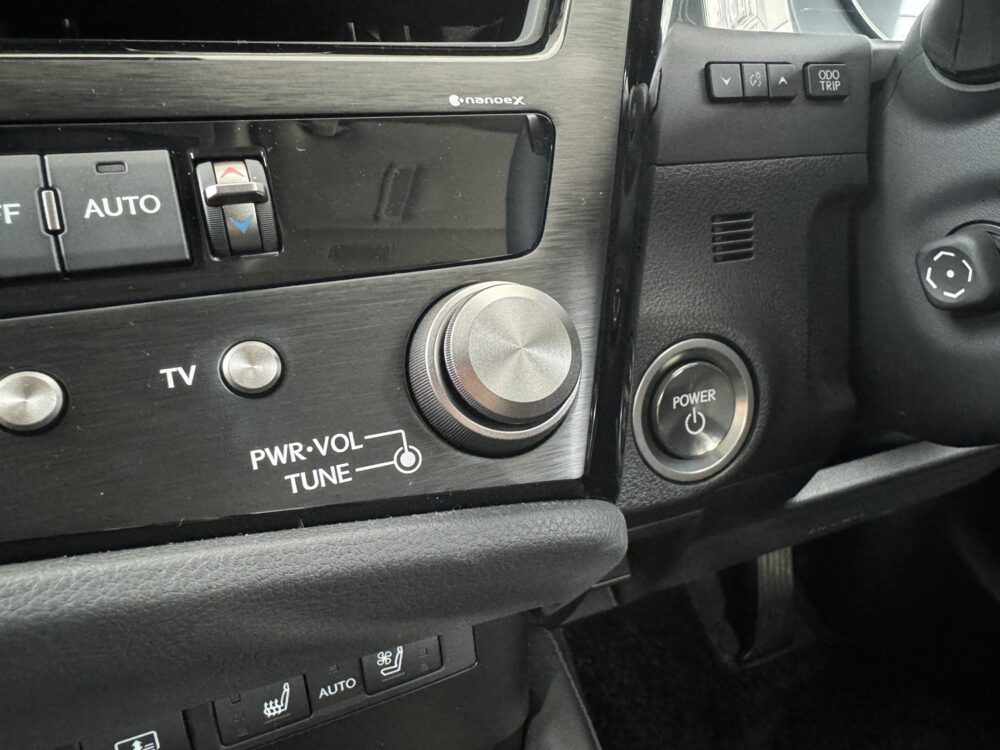
A center console with a charging station. Simple but cool.
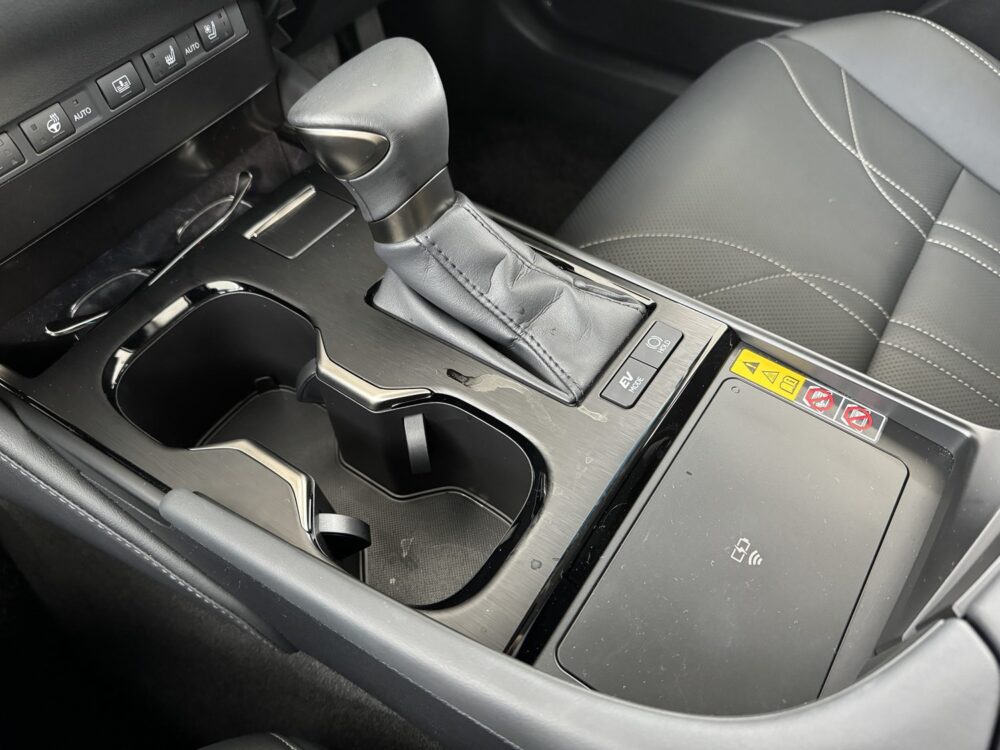
The mysterious lid above the shift knob reveals a USB charging port when opened.
On the back side, there is a storage area for small items and controls for heating and ventilation for the seats and steering wheel.
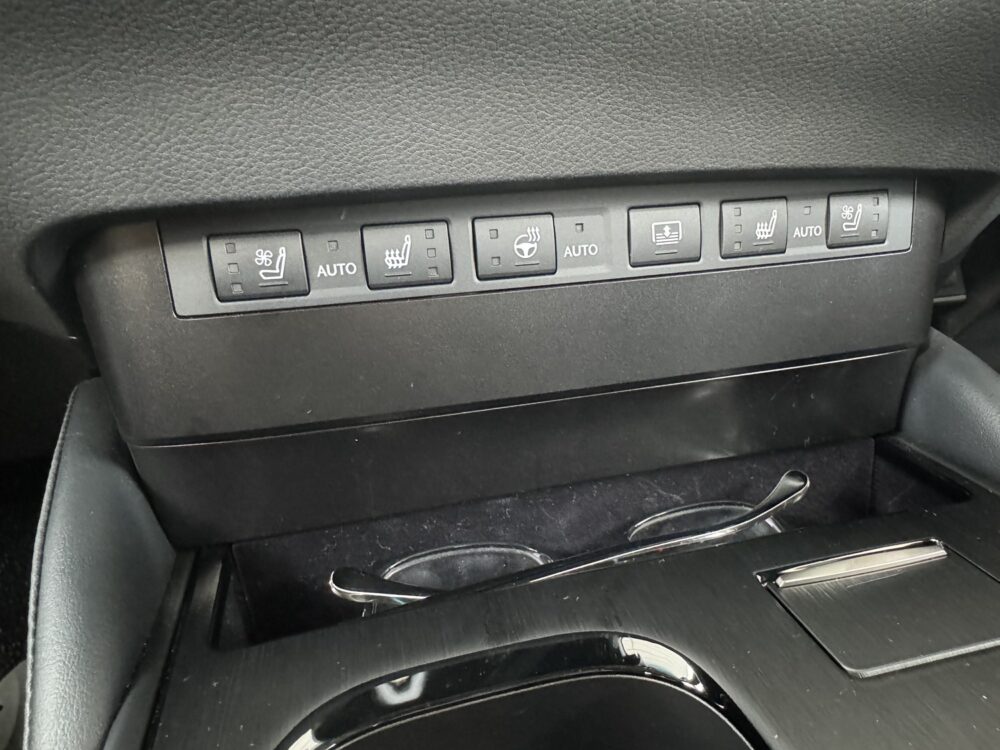
An intricately shaped door handle that gives a sense of artistry. The power passenger seat also has a memory function.
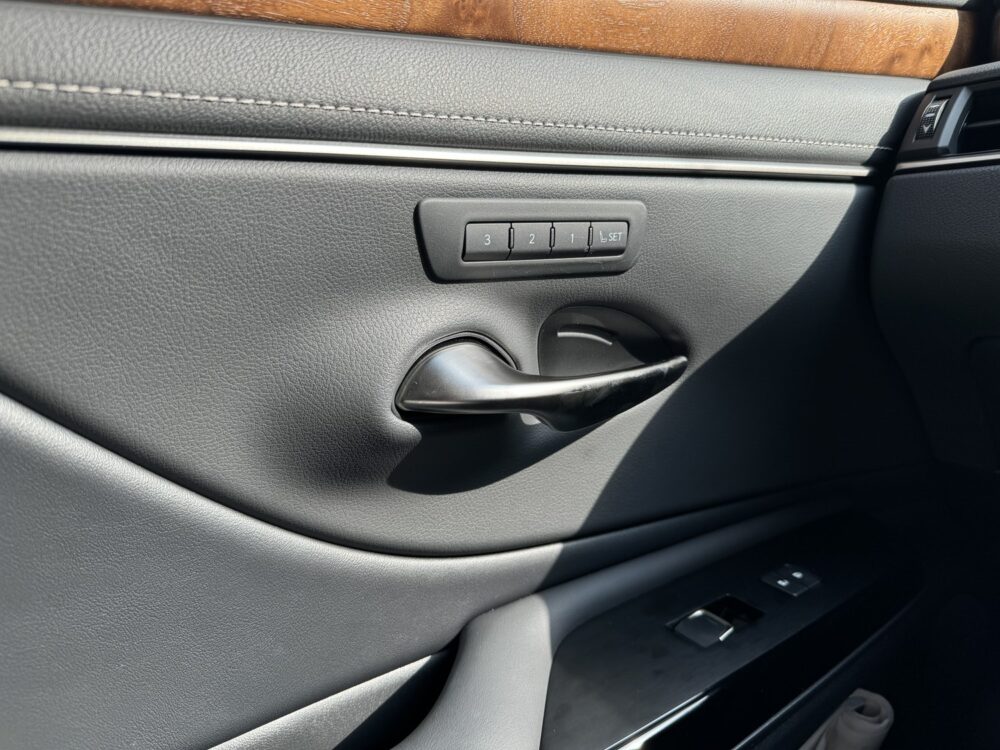
Fortunately, a sunroof is standard on all grades.
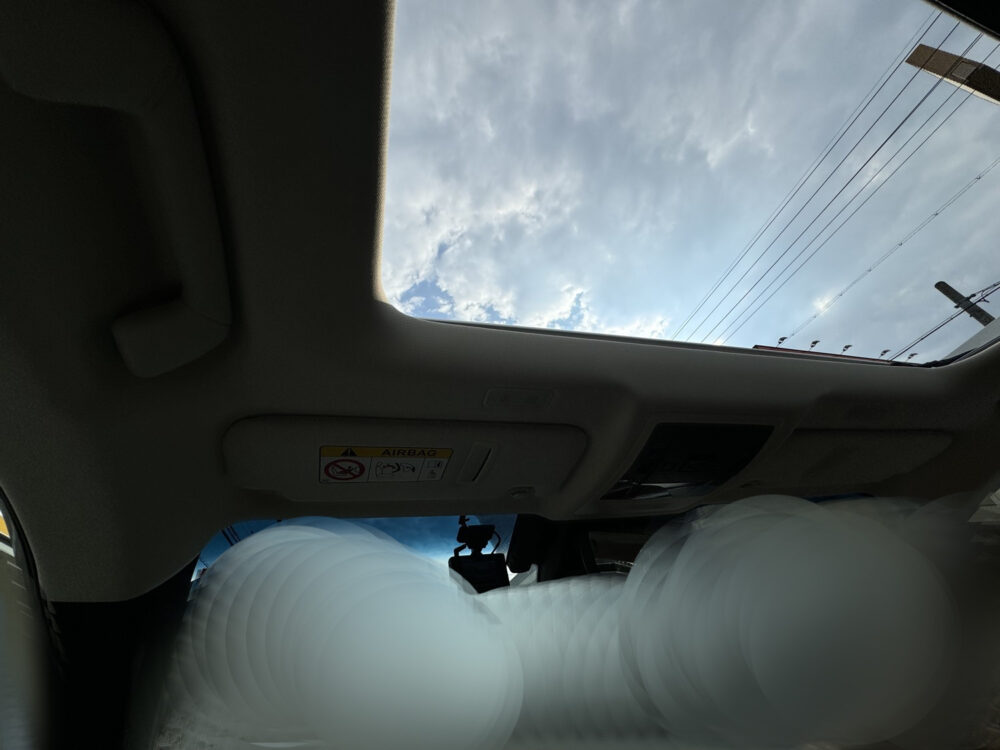
About the second row
Lowering the armrest in the second row reveals the control panels for the seats, air conditioning, audio, etc. It also doubles as a cup holder and accessory case, so people in the second row will be very happy.

There are also two charging ports and a household power outlet at the rear of the center console.
The wood underneath the air vent is very stylish.
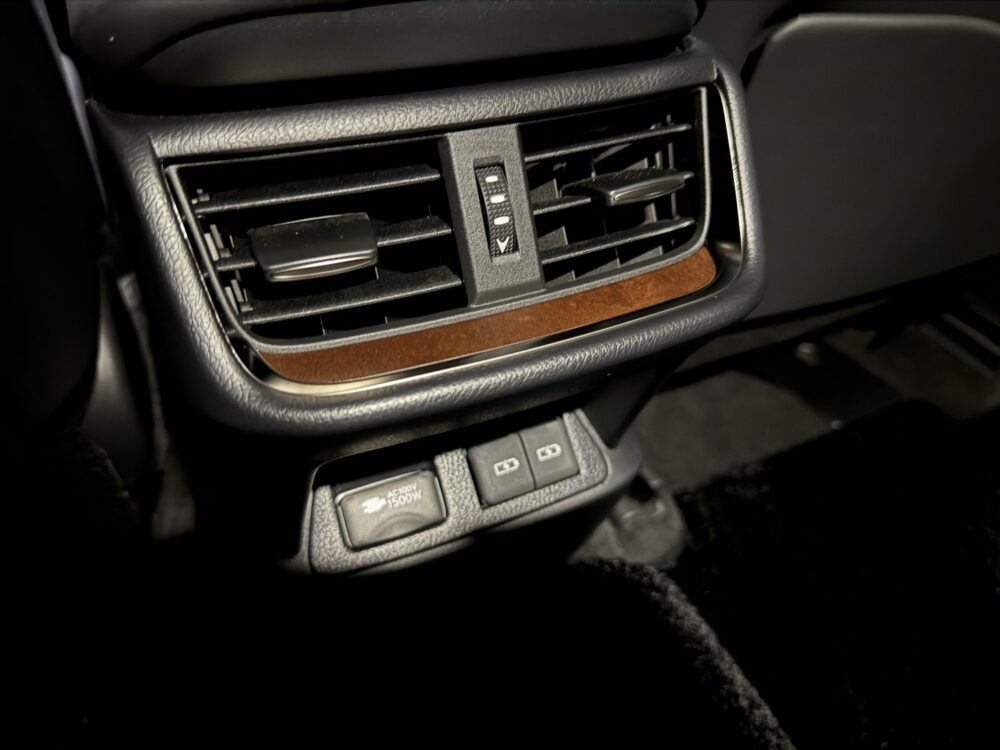
By the way, this outlet is also installed in the trunk.
About the engine room
When I opened the engine, unfortunately it was placed horizontally.
As someone who owns a 50 Prius, there were some parts that I was familiar with, but upon closer inspection, it was interesting to see that they had the same ingenuity as BMW and Mercedes.
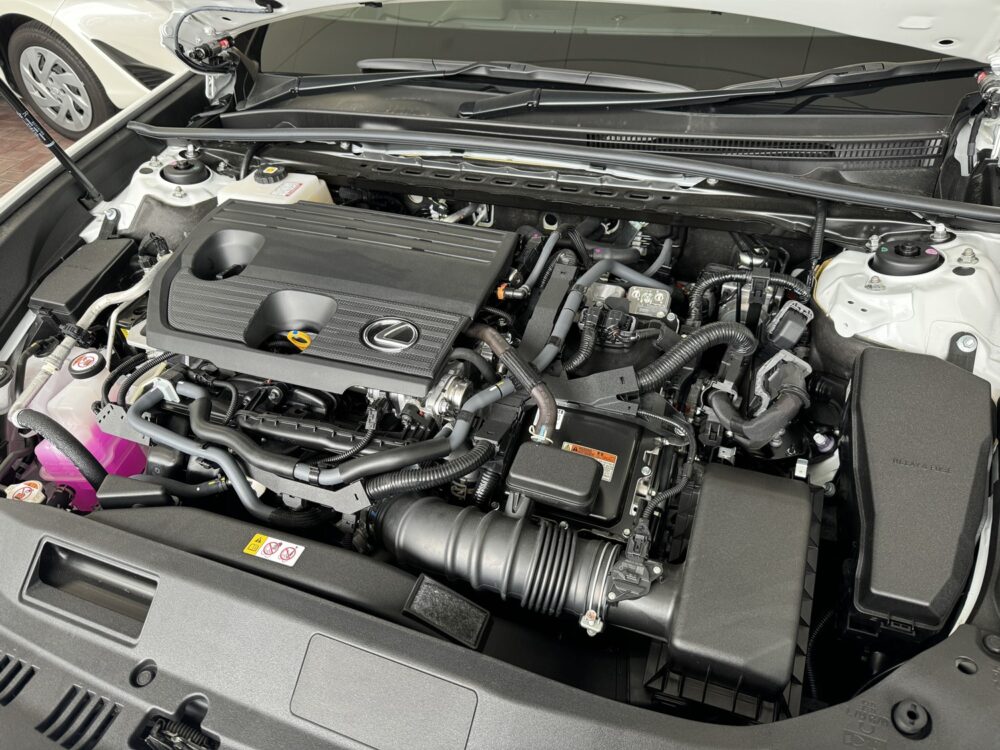
The engine cover is not just plastic, but also features an elaborate Lexus emblem. It doesn’t seem to be full coverage.
The black cover for the motor or inverter next to the engine, the radiator cap, and various harnesses are familiar from Prius cars.
If you look into the bulkhead side, you can see that sound insulation material has been pasted.
There is also a tower bar that strengthens the body that connects the left and right struts, and upon closer inspection, it appears to be connected to the bulkhead side. This may be one of the factors that gives the front a solid feel.
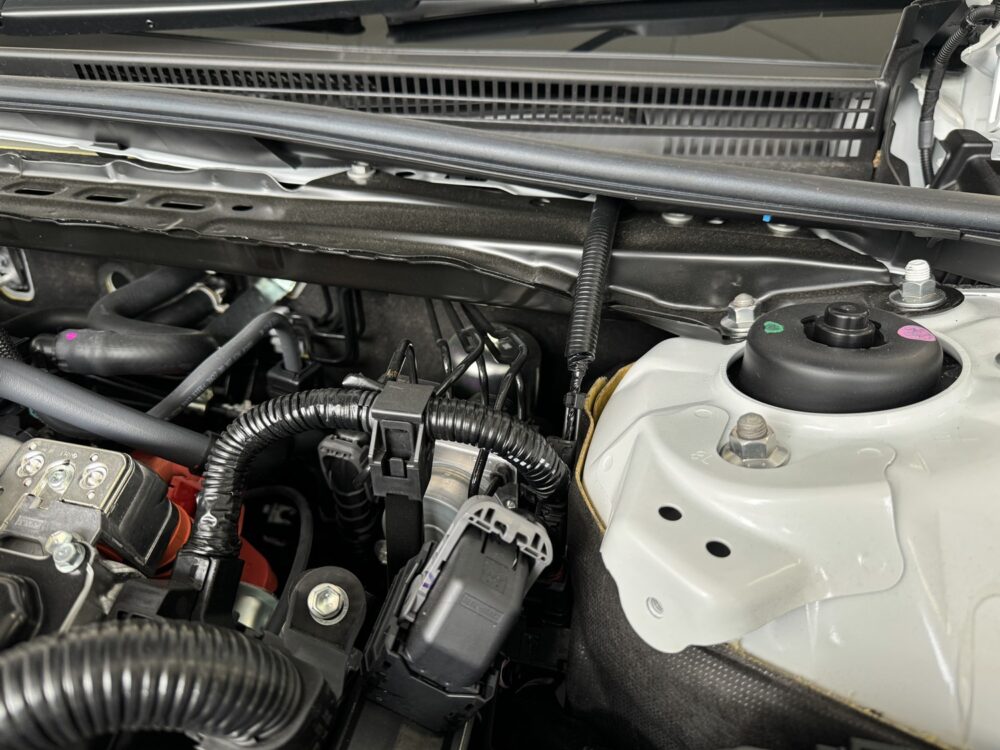
When I looked more closely, I discovered reinforcements that I only see in BMW engine compartments.
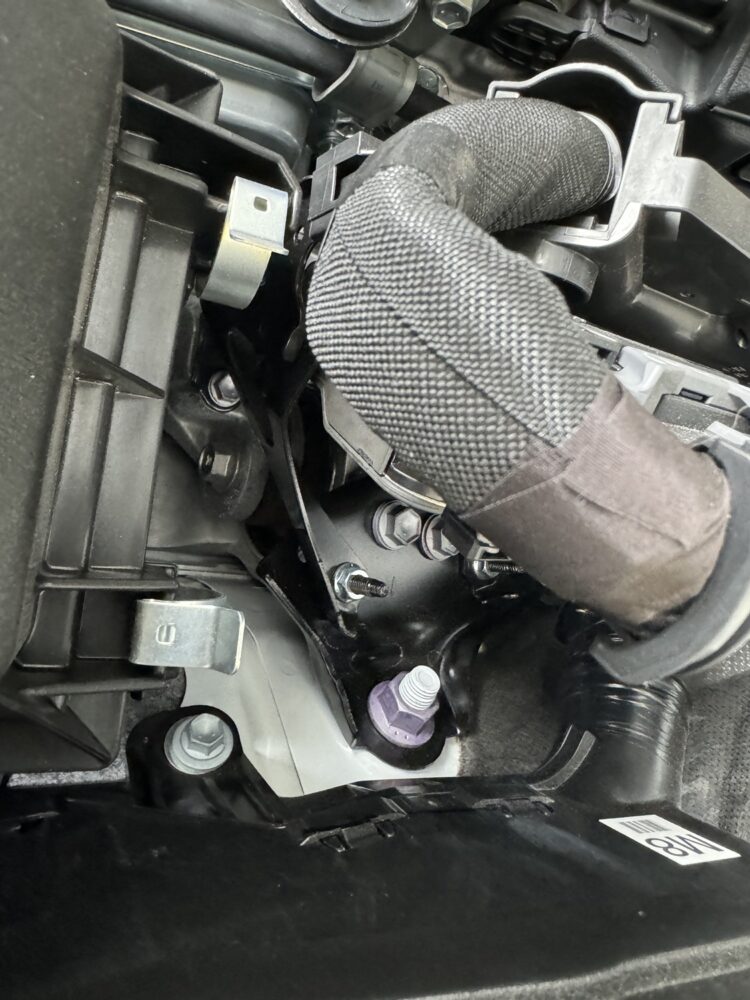
Other things
Cost reduction Toyota elements
For some reason, there are a lot of people online who say things like “cost reduction” or “Toyota” to Lexus without knowing much about luxury cars in this price range.
Let’s talk about those elements here.
First, the key. It has a special design and is very cool, but it is made of plastic. This is what a 7 million yen class car should look like.
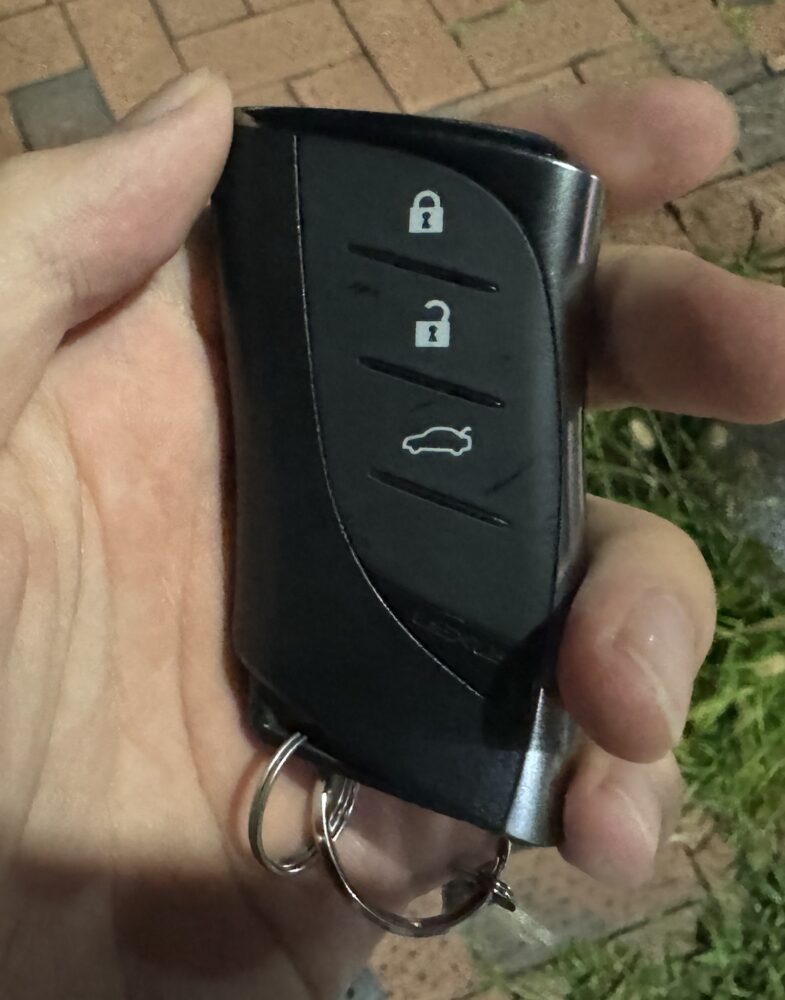
Next is the engine room. It looks logical and gives a good impression, but if you look closely, the cover for the motor or inverter next to the engine has the exact same color and texture as my Prius.
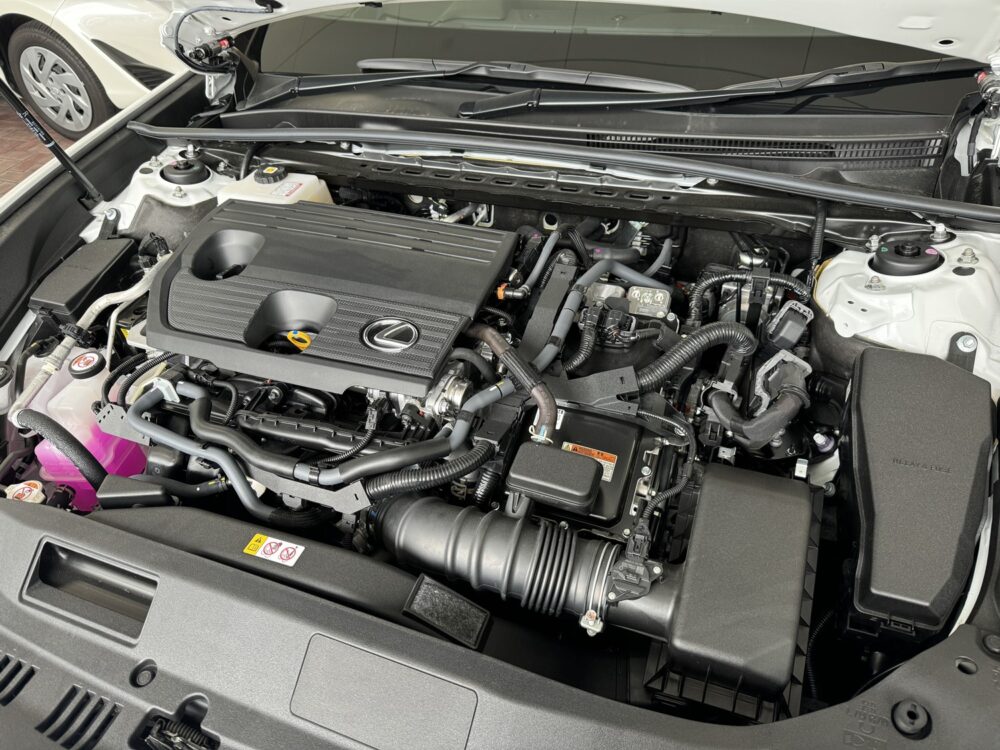
The DENSO-marked cap on the reservoir tank is also the same as my 50 Prius.
However, the details are Lexus preparation as mentioned in the article.
Also, this really doesn’t matter, but when you open the trunk floor, the iron plate is exposed.

It is coated with something like caulk, but this is exactly the same as the ZN6 Hachiroku that I own.
I didn’t mention it because it was too obvious, but the navigation system is also the same as Toyota’s.
The eco-monitor in the meter and the various setting menus with confusing alphabets are also similar to Toyota’s.
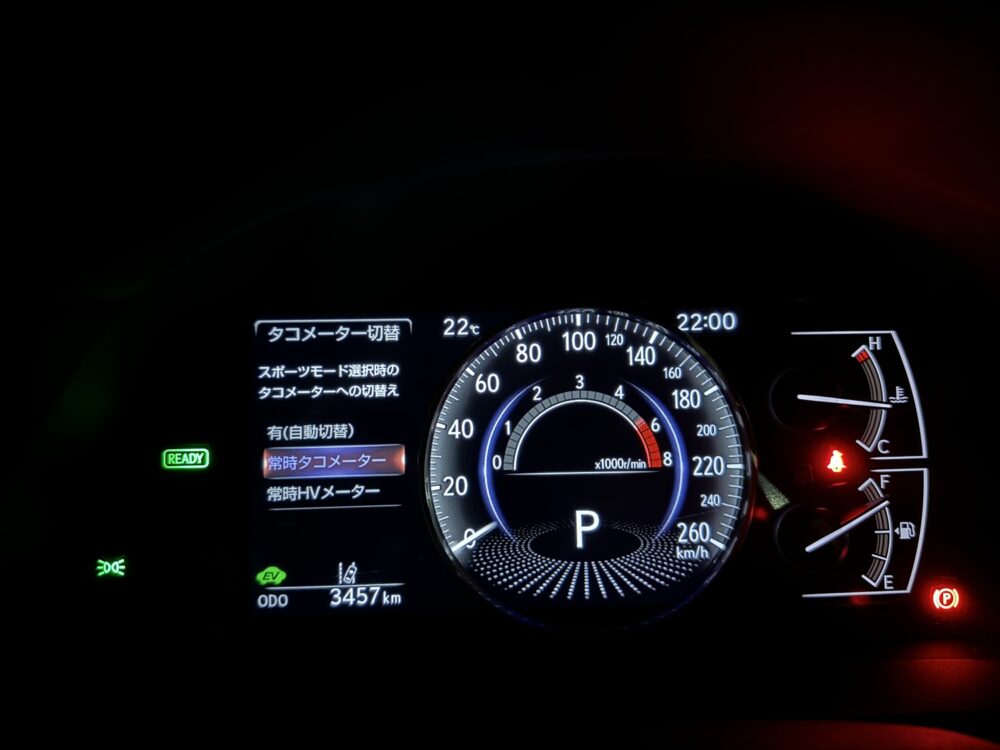
It can be seen that the basic structure of the vehicle is inherited from Toyota.
The Lexus ES will compete with Mercedes’ E-Class and BMW’s 5 Series, but I’ve never driven either of them, so I’d like to test drive one at some point. Let’s compare again then.
People I would recommend/people I wouldn’t recommend
Recommended person
- I want a grown-up sedan that’s the size that’s most comfortable to drive and within my affordable price range.
- I want a mid-sized Lexus sedan
- Doesn’t fly much
- I want to provide comfortable movement space for people in the second row.
- drive long distances on the highway
- I want to enjoy driving to some extent.
- I don’t want a car that behaves dangerously, like if it’s about to spin out due to sudden steering.
- I want to drive stably on roads with heavy rain or on icy roads.
- I want a sunroof
People I don’t recommend
- I want a machine that has nimble handling and can turn easily just by removing the accelerator.
- I want an engine that revs sensually up to high rpm.
- Sleeping in the car, carrying large luggage (so that the back of the second row does not fall down)
- Parking space at home is tight
Bonus: When I drive down Chuo Expressway late at night, I almost always eat sauce katsudon from Komagatake Service Area. The crispy taste of freshly fried food and the sweet but sweet sauce that doesn’t overpower the texture of the batter are the best.

For some time now, the quantity and price of outbound flights (to Nagoya) were slightly higher, but it appears that the prices have been reduced. Along with this, the amount of cutlets is also decreasing.
I had to eat the last two or three pieces while fighting off a feeling of heaviness and discomfort in my stomach, but this reduced volume made it just the right amount of flavor.


